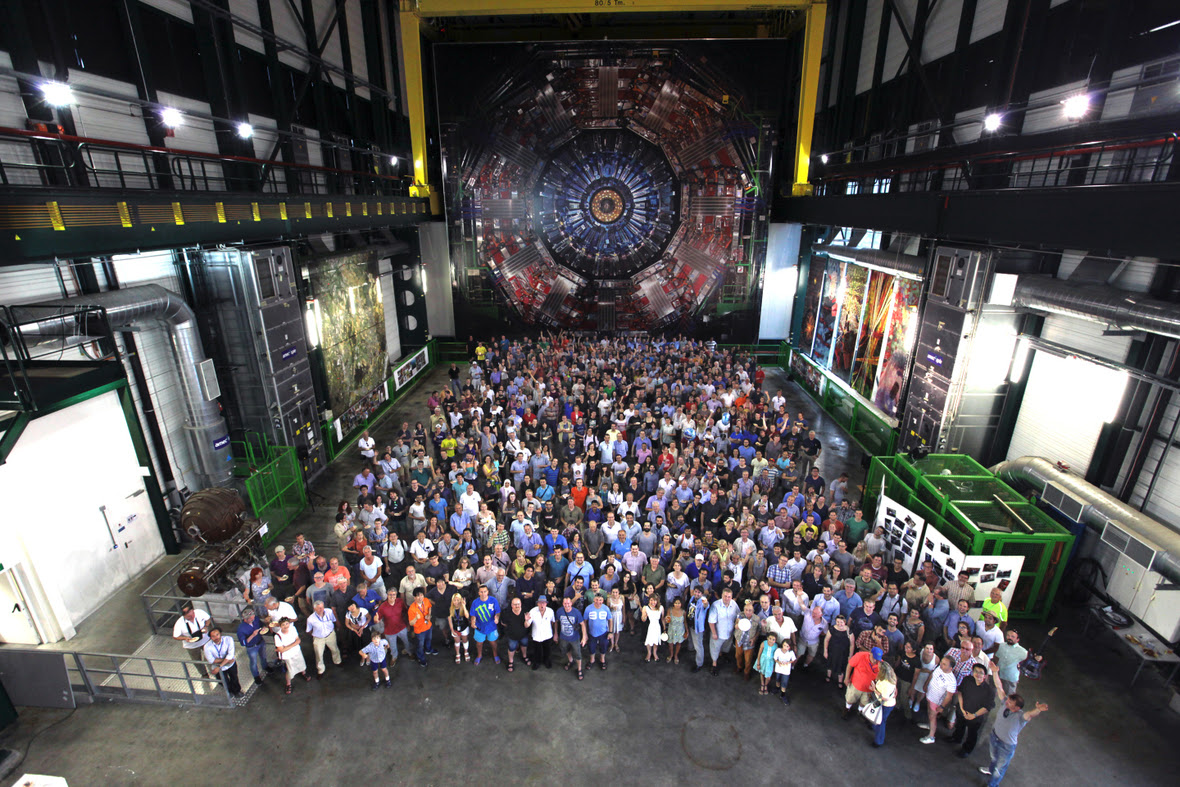 Researchers with the Compact Muon Solenoid (CMS) experiment at CERN. Photo by Michael Hoch. © 2017 CERN, for the benefit of the CMS Collaboration. Used with permission. |
The Corporation for Education Network Initiatives (CENIC) is pleased to announce the turn-up of two 100 Gbps connections in Los Angeles: one between the Energy Sciences Network (ESnet) and CENIC and the other between ESnet and the Pacific Wave international distributed peering facility for research and education (R&E) networks.
These two 100 Gbps peering connections now function alongside ESnet’s existing 100 Gbps connections to Pacific Wave in Sunnyvale, CA and Seattle, WA. With these new connections, researchers at ESnet will enjoy greater performance and improved latency when collaborating with researchers both worldwide and within California—particularly with facilities in the southern part of the state, such as Caltech, the San Diego Supercomputer Center, and UCLA.
“The new peering with CENIC and Pacific Wave enables science researchers to have improved performance to Department of Energy user facilities, datasets, and collaborators. Together with CENIC, we are excited to provide this high-speed access to benefit California’s research and education community as well as science collaborators in Asia and on the west coast who are connected by Pacific Wave,” said Inder Monga, Executive Director of ESnet.
One example of a major international collaboration that will benefit from the improved connectivity within and beyond California is the Global Network Advancement Group (GNA-G)—a community of network professionals from national R&E networking (NREN) organizations all over the world. The GNA-G works together to better align resources and make continent-to-continent interconnections more efficient for global science collaborations and transnational education.
The GNA-G has several working groups, one of which—the Data-Intensive Sciences Working Group—brings together the world’s NRENs and leading science programs with the joint mission of meeting the challenges of fostering a new generation of multidomain services and agile R&E network operations spanning world regions. Harvey Newman, Professor of Physics at Caltech and Chair of this working group, said, “The new peerings and 100 Gbps connections between CENIC and ESnet in Los Angeles represent another major step forward in the multifaceted collaboration with Caltech, UCSD, the National Research Platform, Internet2, and many US and international partners in the GNA-G, who are working to meet the needs of the Large Hadron Collider and other data-intensive science programs.
”Newman added that the new connections to ESnet will accelerate the development of the next-generation network-integrated system, which will meet these programs’ needs for worldwide data distribution, processing, and collaborative analysis on unprecedented scales while supporting the continued efficient use of these networks by current academic and research communities.
|
About CENIC | www.cenic.org |
|
About Pacific Wave | www.pacificwave.net Pacific Wave enables large-scale scientific workflows to accelerate discovery in all areas of science and engineering, including high-energy physics, Earth sciences, astronomy and astrophysics, biology, and biomedical engineering, as well as scalable visualization, virtual reality, machine learning, and artificial intelligence. |
|
About ESnet | www.es.net |

